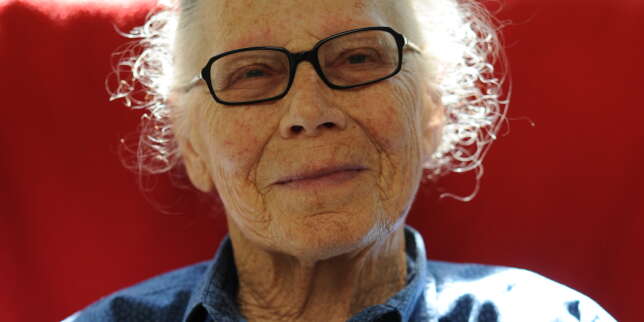Runner
1999 - Installation (Installation)
Hossein Valamanesh
In Runner there are two elements:a big painting and a rolled Persian rug. The rug refers to Iran’s cultural history. The travelling tribes used to transport rugs through the desert on camels or horses so that they would always have a comfortable place to sleep and dream. The oldest known rug is from the 6 th century before J.-C. The rugs’ iconography is related to the mythical Paradise garden. The rug used in Runner refers to the idea of moving in space to emigration and the artist’s story. The big picture made of natural materials (red sand and lotus flowers) refers to Aboriginal paintings and their relation to cosmic forces. This big abstract surface is a reminder of both the Australian and the Iranian deserts. As in most of his work, Hossein Valamanesh knits a dialogue between two cultures while revealing the universal character of each of them, and situates the individual at the center of this configuration.
Hossein Valamanesh’s work is often made out of natural material or found objects such as Persian rugs, family photo albums or clothes. He is influenced by Persian poetry and Sufism, which brings a metaphysical questioning related to his personal reflections. He starts from his own cultural story as an emigrant; from his encounter with another culture to question the human condition. When he arrived in Australia he discovered Aboriginal art which made him decide to stay and settle in Australia. Since then, he has had direct contact with these Aboriginal communities interested in the relation between nature and the cosmos.
Colors:
Related works sharing similar palette

© » KADIST
Jeffry Mitchell
2012Though the title might suggest an Adonis, Jeffry Mitchell’s The Swimmer (2012) is a squat, jolly man with a protuberant belly...

© » ARTS EQUATOR
“Until the Lions” by Akram Khan Company: What About the Lioness? | ArtsEquator Thinking and Talking about Arts and Culture in Southeast Asia Articles Bernie Ng Photo: Bernie Ng, courtesy of Esplanade – Theatres on the Bay October 18, 2018 By Jocelyn Chng (1160 words, six-minute read) Until the Lions , a work that premiered in 2016 at the Roundhouse in London, is presented as one of the main (Centrestage) programmes at the 2018 Esplanade da:ns festival ...

© » ANOTHER
Jamie Hawkesworth, Alec Soth and More Sell Prints in Aid of Gaza’s Children | AnOther Featuring work by Camille Vivier, Jack Davison, Venetia Scott and more, Have A Butchers’ print sale raises money for charities protecting children in Gaza November 29, 2023 Text George Pistachio Earlier this month, the London-based, women-led creative gallery space and online concept store Have A Butchers launched an online charity print sale in aid of the children affected by the humanitarian crisis in Gaza...

© » SLASH PARIS
Jean-Charles de Quillacq — Les poulains deviennent des chevaux — Marcelle Alix Gallery — Exhibition — Slash Paris Login Newsletter Twitter Facebook Jean-Charles de Quillacq — Les poulains deviennent des chevaux — Marcelle Alix Gallery — Exhibition — Slash Paris English Français Home Events Artists Venues Magazine Videos Back Previous Next Jean-Charles de Quillacq — Les poulains deviennent des chevaux Exhibition Mixed media Jean-Charles de Quillacq, Ouverte (Discomfort), 2023 (Détail) Collage et acetone sur poster — 59,7 × 80 cm Courtesy de l’artiste et galerie Marcelle Alix, Paris Jean-Charles de Quillacq Les poulains deviennent des chevaux Ends in 27 days: January 11 → March 9, 2024 “I was a piece of factory for eternity.” Georges Navel, Travaux [Works], Gallimard, 1995, p.108 How can one rediscover desire when its very mechanics are monopolized by capitalism? Where can our desire still intrude in the plethora of poetic, pornographic, intellectual, psychological, promotional, and political offerings? In the field of ruins of the imaginary, increasingly littered with Instagram images of war victims, portraits of friends who left this world too soon, calls for help from NGOs, and—in their wake—, images of ever more exhibitions we couldn’t see, parties that always look better from afar, clothes that would finally suit our morphology, or the latest accessories needed to help us sleep...

© » SLASH PARIS
Matthieu Laurette — Une rétrospective dérivée (1993-2023) — MAC VAL Musée d'art contemporain du Val-de-Marne — Exposition — Slash Paris Connexion Newsletter Twitter Facebook Matthieu Laurette — Une rétrospective dérivée (1993-2023) — MAC VAL Musée d'art contemporain du Val-de-Marne — Exposition — Slash Paris Français English Accueil Événements Artistes Lieux Magazine Vidéos Retour Matthieu Laurette — Une rétrospective dérivée (1993-2023) Exposition Techniques mixtes Matthieu Laurette, Self-Portrait, 2014/2023...

© » ARTS EQUATOR
Hitting up the Producers SG Directory: Taufik Darwis, Racy Lim and Khor Seng Chew | ArtsEquator Thinking and Talking about Arts and Culture in Southeast Asia ArtsEquator Viewpoints March 19, 2021 What is producing within the context of the arts? It is a question whose answer might vary depending on who you ask...

© » THEARTNEWSPER
Historic New York ceramic studio fires up second location Art market Museums & heritage Exhibitions Books Podcasts Columns Technology Adventures with Van Gogh Search Search Pottery news Historic New York ceramic studio fires up second location With its Jones Street home operating at full capacity, Greenwich House Pottery is opening a new outpost in Chelsea Hilarie M...

© » KADIST
Samson Young
2014In Muted Situations #2: Muted Lion Dance by Samson Young, Chinese lion dancers perform the auspicious procession traditionally presented at special occasions such as weddings or during the Lunar New Year...

© » KADIST
Asociación de Mujeres Tejiendo sueños y Sabores de Paz de Mampuján, Pavel Aguilar, Carlos Amorales; Jonathas de Andrade, Edgardo Aragón, Fredi Casco, Miguel Covarrubias, Sam Durant, León Ferrari, Jocelyn Gardner, Beatriz González, Pierre Huyghe, Cristóbal Lehyt, Jesse Lerner, Teresa Margoles, Guillermo Kuitca, Jesse Lerner, Noé Martinez, Alfredo López Morales, Cildo Meireles, Eustaquio Neves, Nohemí Pérez, Naufus Ramírez Figueroa, Antonio Reynoso, Rometti Costales, Pablo Swezey, Carla Zaccagnini...











